📣 YOU are clearly getting prepared for pregnancy, birth & beyond — but do you wish your partner was more involved (looking for a teammate rather than just a cheerleader)? Couples love THIS! 💛🧡💚
Have you ever heard that if you go looking for trouble, you’ll find it? Studies show that is also true in fetal heart monitoring. Continuous fetal heart monitoring, while the standard of care most often in the US, has been shown to be problematic, especially in low-risk cases. In this article I’m going to share how the hospital should approach fetal monitoring, and what you can ask for in your case.
Note: Intermittent Auscultation is NOT the standard of care at the majority of hospitals in the US. Most often they say “let’s get the monitors on” when you get to the hospital, and don’t talk about what could happen if they keep them on. Please be kind to your birth team if you’re hoping for intermittent monitoring. It may be very outside their normal use and as I’m sure you can imagine that if you’re outside of your comfort zone (on something as important as you/your baby) they can be nervous. Being aware of the data can really help both of you!
I will say this is a tough article for me to write. I would be VERY nervous to do intermittent monitoring. I just want to be really clear on that. We have been trained to really RELY on the fetal monitoring, but the more patients that want intermittent, hopefully we can be comfortable with that too.
Types of fetal monitoring available?
I wanted to define what the two types of monitoring are:
Intermittent Auscultation: This is done using the doppler (what they use in the doctor’s office) and the nurse’s hand as they palpate for contractions. Usually they’re going to listen before and after a contraction every hour to 5 minutes depending on where in labor you’re at.

Continuous Fetal Monitoring: This has monitors placed on your belly to check baby’s heart rate and the contractions.

They will always use continuous fetal monitoring initially
Every mom/baby pair that shows-up to labor and delivery needs an NST. That means applying the fetal monitors initially. We need to watch baby over a period of time, as well as monitor contractions. Plus, we need to get you in our system and get some vital signs.
Every hospital I have heard has continuous fetal monitoring (at least an NST) as an obligation when you show-up to L&D. So, don’t expect intermittent auscultation from minute one — that isn’t realistic (or safe).
This gives us a chance to watch baby fully as you contract to make sure baby is handling the contractions well and their heart rate doesn’t have any big changes with it. Having an NST allows us to determine if intermittent auscultation is right for you.
I should say you can really refuse WHATEVER you want (including monitoring when you come) but that is going to be a tough one for nurses. We aren’t sure what to do if we can’t check on you and baby… it makes us unsure how to help you. These are great questions for your provider as they’ll know the standard at the hospital you plan to deliver at.
Informed Consent on Continuous Fetal Monitoring
Informed consent should be obtained by your provider (doctor or midwife) for what they plan to have happen at the hospital. This includes (but isn’t limited to):
- Continuous fetal monitoring
- The IV
- Vaginal exam upon arrival (and during labor)
- Induction plans
- Possible need for blood during your stay
For continuous fetal monitoring (CFM) that should look like this:
At our hospital we normally use continuous fetal monitoring that monitors the baby’s heart rate along with contractions for most of your stay. We mostly used wired monitors, although there are sometimes wireless ones available if you’d prefer that.
The benefits of this is that we can watch you and baby all the time, no matter where we are at, through central monitoring available at the desk and every patient room.
The risks is that most babies do have some changes in heart rate from time to time, especially in labor, that may not actually be something bad. We may end up doing interventions that may not actually be necessary based on us watching constantly.
The alternative would be intermittent auscultation. This is done with a doppler monitor at times set by what stage of labor you are in varying from every 5 minutes to every hour or so. It will require the nurse to check on you frequently, she will be more hands-on your belly and it is important she still get it at the times set by our policy.
Learn more about informed consent here.
And then you get to make-up your mind on what you’d prefer.
Some people will really like the idea of being able to watch baby continuously.
Some people will like the idea of more movement and freedom while they’re in labor, and not having those “false alarms”.
Both of those people are completely fine. You get to choose what works for you. AND, the good news is that you can change your mind and switch to another type of monitoring at some point if you’d like — as long as you don’t fall into “high risk.”
I will say that I very RARELY hear providers giving informed consent in the office for things like fetal monitoring. So, if your provider does this, that’s amazing. But, if they don’t — don’t worry that you have a loser provider. It really isn’t the standard (even though it should be). As a reminder, it truly is your doctor or midwife’s job to give informed consent, not the nurse’s. We just end up doing it a lot to make sure you understand what’s going on.
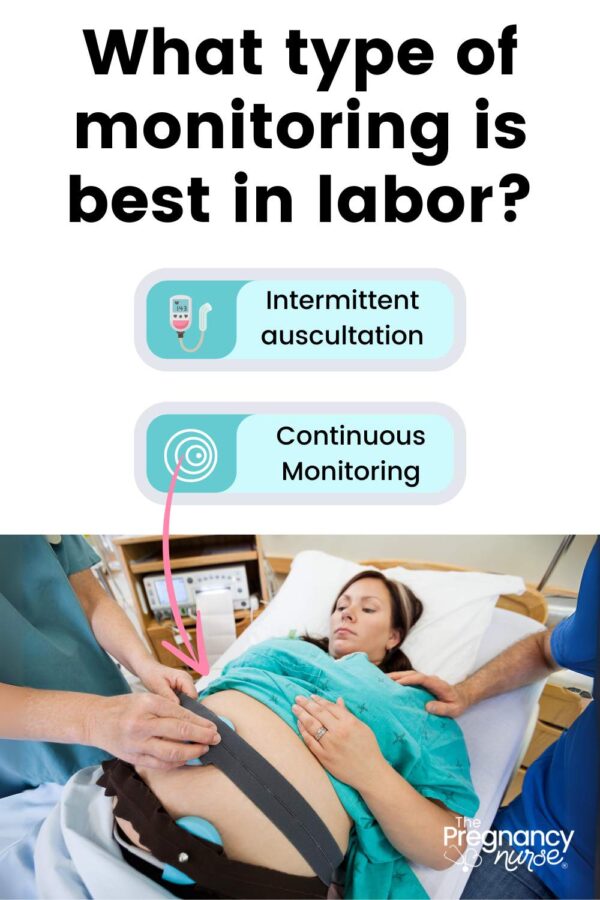
Why the hospital prefers continuous monitoring?
Before we get more into this, let me tell you a few reasons why continuous monitoring has become the standard of care in most US hospitals:
They believe it protects them legally. It shows that they were monitoring baby. You can have two patients and still have eyes on the baby in the other room and know if something is wrong. You can chart more aggressively with continuous monitoring (we have all this training on it and special terms we use for when the heart rate goes down, or how much baby’s heart rate changes second to second). More on why this isn’t necessarily true in a second….
It saves on staffing. If you’re doing intermittent auscultation that means you have to be IN your patient’s room every 15 minutes for at least a full contraction. This makes it harder to have two patients. Yes, sometimes we have to chart every 15 minutes on fetal heart rate tracings, but we can back-do that, and not actually be in the room…. if that makes sense?
Part of me also feels like patients like it? Although I don’t really know. I think most patients expect it — so if they just said — we’re just going to listen to your baby every 15 minutes they’d worry they were at a “lesser” hospital.
It isn’t right for anyone high risk. The more we induce people, or give epidurals, or the patient has high risk issues like PIH the less we can actually provide that. It’s like we almost opt everyone into the high risk group, simply because most patients are in that group.
I mostly blame the lawyers (I do that a lot). However, when I was at in an AWHONN class on this, the instructor mentioned she’s had legal cases involving both continuous monitoring and intermittent auscultation, and she found that the intermittent one was easier to handle because it’s just what the nurse says it was — vs all the experts reviewing hours and hours of strip second-guessing you…. So, that’s something to for people on the healthcare team to think about as well.
BTW, if you’re a provider wanting to know more about this check out this class by PQI — they are the people who taught the class at the AWHONN conference that opened my eyes to it more.
While we’re here, you may start to think monitoring is SO important and yet you’re just walking around with a baby. BUT, in your third trimester fetal movement is your best indicator of fetal well being while at home — grab my cheat sheet to doing them right here:
We’re going to talk about what the professional organizations think in a minute, but first — the data.
What do studies show about continuous fetal monitoring?
I should say that nurses don’t have this information hidden from them. I’ve known this for years — and I hate fetal monitoring more than you can imagine, but somehow we’ve just decided it’s a necessary evil.
There is a Cochrane review that is really thorough, and usually the big standard in these types of studies where they review a bunch of similar studies and then pull-out common themes they found. Here’s the source:
Alfirevic Z, Gyte GML, Cuthbert A, Devane D. Continuous cardiotocography (CTG) as a form of electronic fetal monitoring (EFM) for fetal assessment during labour. Cochrane Database of Systematic Reviews 2017, Issue 2. Art. No.: CD006066. DOI: 10.1002/14651858.CD006066.pub3. Accessed 20 June 2024.
I would encourage you to check out the review on your own, if you’d like. I’m going to pull-out what I see as highlights when they compared continuous monitor vs intermittent auscultation:
No difference in the perinatal death rate (also called infant mortality rates) — meaning no more/less babies died between the two types of monitoring.
No difference in cerebral palsy rates. This is significant as this is one of the main things we always thought continuous monitoring would “fix” this for us (that is actually why it was created).
Increase cesarean rate with continuous monitoring — meaning MORE people had C-sections with continuous monitoring than those with intermittent auscultations — but with similar outcomes as the rest of the results show.
More likely to have instrumental vaginal birth (forceps or a vacuum) with continuous monitoring — again, we see problems and we try to “fix” them.
No changes in cord blood acidosis. We often check “cord gasses” after baby is born to tell if baby was stressed during birth and was without oxygen and had to compensate. No changes between intermittent or continuous. Some hospitals do this on every birth, and some do it on only babies that seem to have a problem.
Decrease in neonatal seizures in those on continuous monitoring (they aren’t sure how this affected babies long-term). Neonatal seizures don’t always mean poor outcomes for those children as they grow-up.
I thought this conclusion was interesting (I’m quoting directly from the study):
Research should also address the possible contribution of the supine position to adverse outcomes for babies, and assess whether the use of mobility and positions can further reduce the low incidence of neonatal seizures and improve psychological outcomes for women.
Meaning continuous fetal monitoring often limits your positioning during labor. Often your back or side is the only position we can find baby in. Meaning you’re sort of “stuck” there.
I will say that wireless monitoring is getting more advanced to hopefully allow you the movement, and allow us to watch baby as well. It’s just not there yet for most patients (it’s super positional, sometimes has a really hard time in certain positions, etc).
Cliff Notes: There were increase interventions like C-sections and Forceps with continuous monitoring with only a small decrease in neonatal seizures. There was no decrease in other poor infant outcomes between continuous vs intermittent fetal monitoring. This translates into more spontaneous births with intermittent monitoring.
BTW, Love posts with the evidence/data — check out these posts too:
- Should You Let Your Provider Break Your Water?
- Considering A VBAC: What To Do
- How Many CM Do You Need To Be To Get An Epidural?
- When Should I Start Drinking Raspberry Leaf Tea?
- Do Birth Classes Improve Birth Outcomes? What Do The Studies Show?
What do the professional organizations in the US say?
The US has two governing bodies as to what doctors (ACOG — American College of Obstetrics and Gynecology) and nurses ( AWHONN — Association of Women’s Health, Obstetrics and Neonatal Nurses) — so, let’s see what they say:
ACOG recommends intermittent fetal monitoring if the patient prefers (depending on patient status)
For a woman who is at term in spontaneous labor with a fetus in vertex presentation, labor management may be individualized (depending on maternal and fetal condition and risks) to include techniques such as intermittent auscultation and nonpharmacologic methods of pain relief.
Read more here.
AWHONN also recommends intermittent auscultation. As fetal monitoring is normally performed by nurses (and they are the most trained/certified to read it, actually) this is an important fact which they share in their fetal monitoring courses. I can’t find a link online but PQI teaches intermittent auscultation per the AWHONN guidance — you can learn more here.
I thought I’d also mention that if, at any time we have concern (with your permission) we will 100% switch to continuous monitoring. It does give us a better picture of things — so, it’s not like we just ignore stuff while using intermittent.
What do hospital policies say?
I would guess that most hospitals have an intermittent auscultation policy but I haven’t used it in a LONG time. Most hospitals I have worked at decided this was an NST every hour for patients. That isn’t true intermittent auscultation.
Fun fact, I learned that hospitals should NOT be using the ultrasound monitor from continuous monitoring to do intermittent auscultation at all, it should only be done with a doppler. For a variety of reasons.
Most often, if you have anything high risk going on you will need continuous fetal monitoring, otherwise we’re unable to continue with what’s going on. That includes:
- An epidural (although I have heard some hospitals switch to intermittent after the first hour or so)
- Induction (any type, although some cervical ripening doesn’t require monitoring all the time)
- Other meds like magnesium sulfate in labor, and likely IV pain meds (at least for a while).
Depending on what the hospital policy says, the nurse has to stick to that policy in these instances — meaning we have to stop the medications, etc. if you don’t want continuous monitoring. Otherwise we’re legally liable and could lose our license.
However, policies vary some hospital to hospital, so you can always ask what yours is.
Your provider can override policy with a doctor’s order, but I find that really unlikely in these situations. It would put them in legal risk, and the nurse may go above them for safety reasons.
So, if you refuse continuous monitoring, you’re ultimately also refusing the induction or epidural, etc.
I hear a lot of times on social media that hospital policy doesn’t matter to you, but in instances where we are putting medications in, we have to follow that policy. Yes, you can always make the choice you’d like- – but then we are required to do other things on our end — hopefully that makes sense.
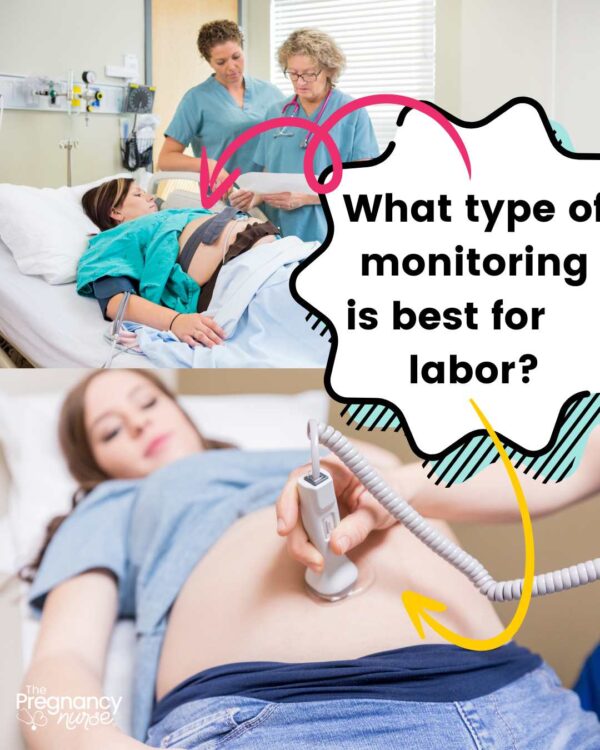
Let’s go through the pro’s and con’s really quickly in easy to understand language:
Pro’s of Continuous Monitoring
You can see constantly what baby’s heart rate is and how it’s affected by your movement, contractions, etc. For a lot of moms they find this really re-assuring after wondering for much of pregnancy how baby is doing.
The nurse may not have to bother you as much. If you’re still, and those monitors are placed we can leave you alone and just watch the monitor. This is very true if you’re trying to get rest.
Con’s of Continuous Monitoring
We’re just watching for trouble, and we often find it. It’s really scary when 5 nurses run in and change your position, give you fluids and check your cervix when the heart rate goes down. We honestly have no idea if baby just grabbed their cord as a reflex and then let go, or if something is actually wrong.
We do know, that if we continuously monitored everyone through their 3rd trimester we’d see dips in the heart rate. We know babies have great outcomes even though this happens. But, because we SEE it — we HAVE to act (legally).
It often leaves you in one position where we can get baby. While wireless monitoring has come a long way, it doesn’t always get the baby well either. It’s tricky. The monitors move, you move and we’re constantly adjusting them.
Nurses can also get really stuck treating the monitor instead of YOU. Sometimes it feels like the monitor is my patient, not you. Just speaking my truth here. It also makes birth very “medical” vs “natural”.
If continuous monitoring sounds comforting to you, I will say that a good birth class can help you navigate any of the con’s of it with ease. You’re not going to be as scared as those initial interventions because you understand them. You’ll also be able to easily discuss options with your team. Everything is just easier. I recommend this one.
You may think I’m joking when I say that routine things in the hospital can really scare patients in labor and delivery — but studies show that it is actually things that don’t seem traumatic that end-up being that way in the hospital — usually due to lack of education & communication. So, a class really can help!
Pro’s of Intermittent Auscultation
You can move as you’d like between us listening. You’re free as a bird which is awesome for labor — and we know movement is important! That means using the tub, the shower, or lunging to your heart’s content!
Times between listening varies depending on how far into labor you are. I have heard it can be every 1-2 hours in early labor, and then moving to every 15-30 minutes in active labor, and then every 5-15 minutes as you push. Most often they’re listening for around 5 minutes of time when they listen (but they have to have baby on the doppler those 5 minutes).
Obviously, us seeing less problems leads to us doing less interventions. Less nurses running in the room to do “stuff” to you. That isn’t to say that we don’t catch problems with auscultation — just less likely to have false alarms.
Con’s of Intermittent Auscultation
Obviously it can’t be done with the higher risk things I’ve mentioned.
There is stuff we could miss when baby’s not on the monitor. But, in the review it didn’t seem to be as problematic (although that neonatal seizure thing is somewhat disconcerting, I’d love a follow-up on those kids).
The nurse will be a bit more hands on at times when they listen. They’ll need to palpate (push gently) on your belly and find baby.
Honestly, as you’re pushing, that sort of ends-up being continuous, even if it’s with the doppler. If they’re required to check every 5 minutes and need to listen before/after a contraction, that’s almost continuous. Just so you’re aware.
Also, the nurse needs to concentrate for the time she’s counting the heart rate. I can have a full conversation with you at the same time I’m looking at your strip — but that won’t always be the case with monitoring.
This may be harder to advocate for yourself. I can see hospitals being fine with it in early labor but more and more nervous about it the closer you get to birth. I just think it’s important to know that going in. Learning more in here will help you a ton!
What to choose?
If you choose an epidural, induction or need something along those lines your choice is pretty well made-up for you. They come as a package deal.
However, if you’re low risk you’ll have to decide which works for you.
Studies are great, but they don’t ultimately tell you what works for you. You can look at the research and then decide what feels best to YOU based off your needs and wants. The good news is that you can always change your mind.
The other reality is that most hospitals are just used to continuous monitoring. You may have to “fight” to get intermittent and they may push you to continuous, unfortunately. I just think that’s important going in.
If I was planning on intermittent I would probably print out a birth plan which would include the fact you read the Cochrane analysis.
And again, you can change your mind either way. Tired of continuous monitoring and want to switch it up? Tell them that. See what happens!
I would say that having a lot of good communication skills under your belt would be important in this situation. I would 100% understand how birth in the hospital works by taking a birth class with someone with LOTS of experience. I recommend The Online Prenatal Class for Couples. It was created to quickly help you understand what usually happens at the hospital, as well as your options — WITH your partner. It only takes a few hours and couples just love it!

Want to do a vibe check before diving into the whole thing with me? — check out my free labor pro tips. It’s your first step toward getting in the driver’s seat of your birth.


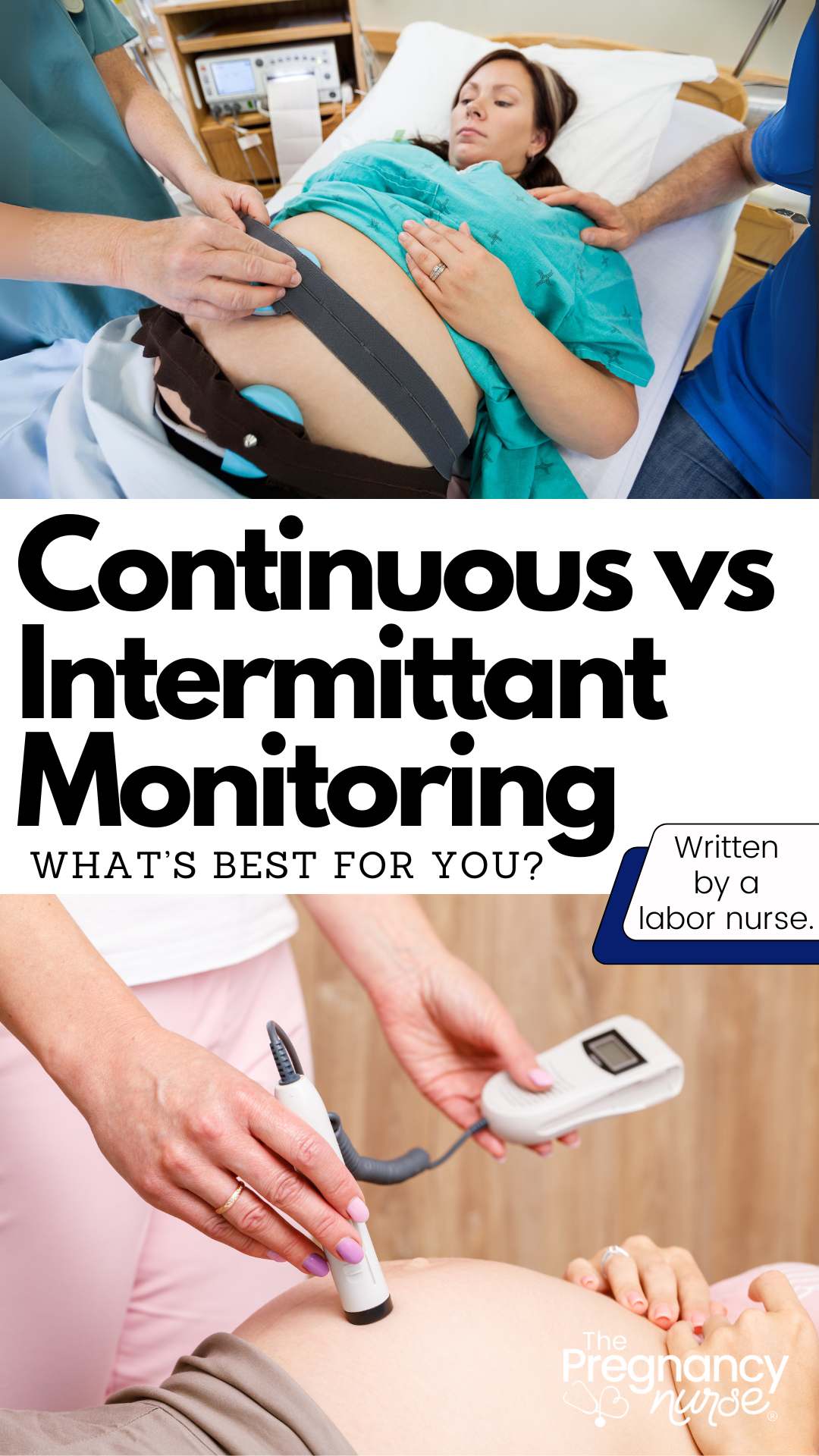
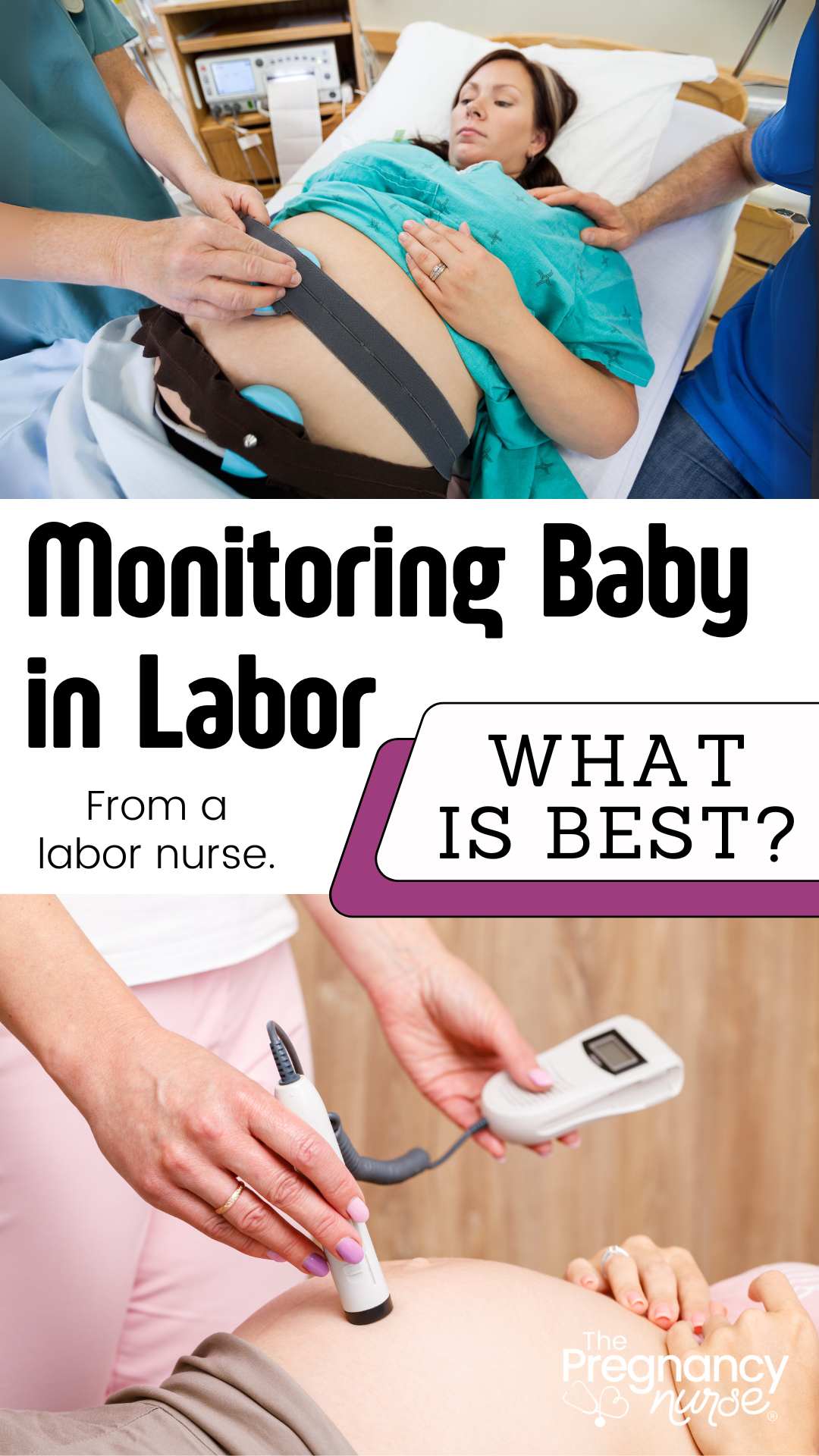
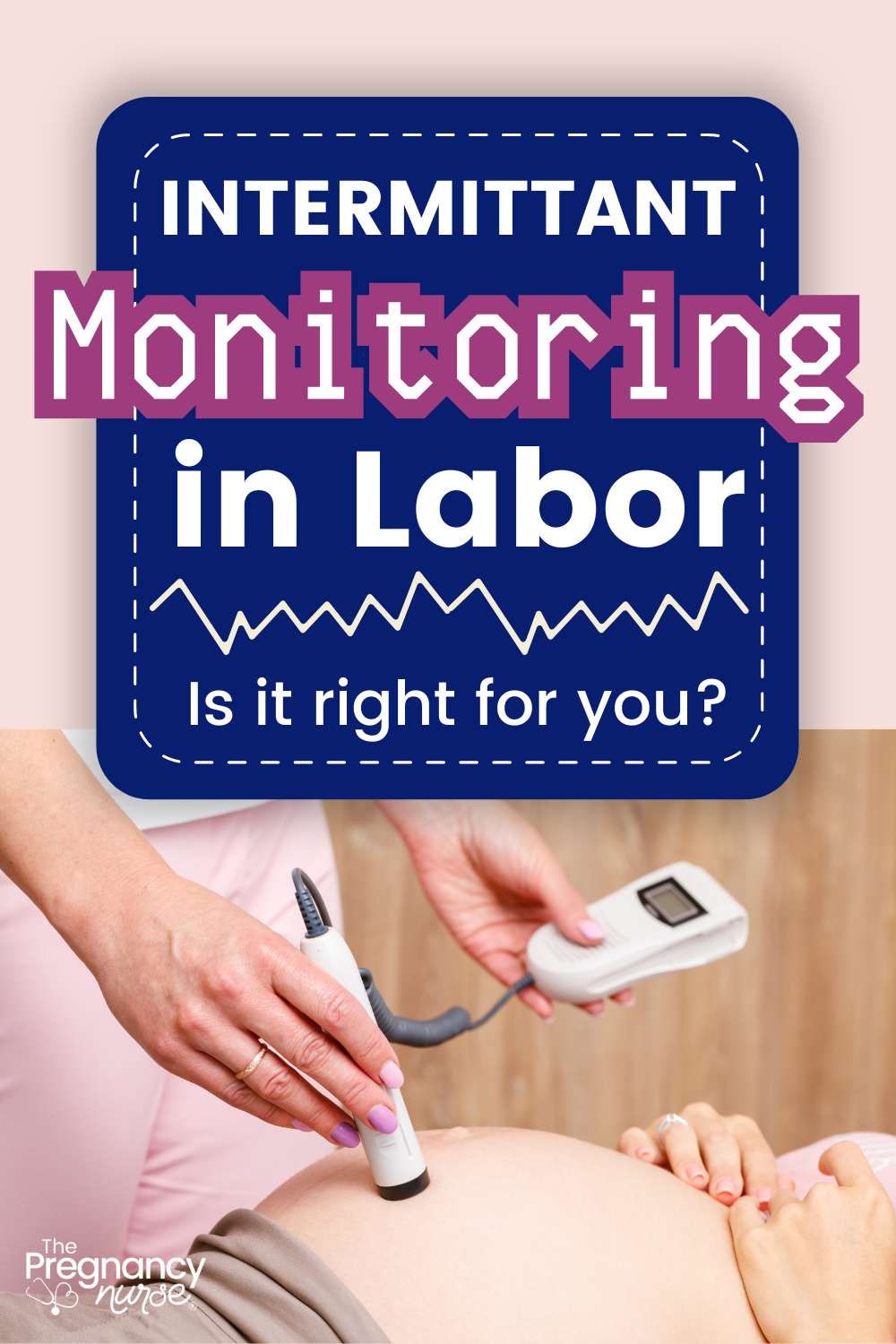
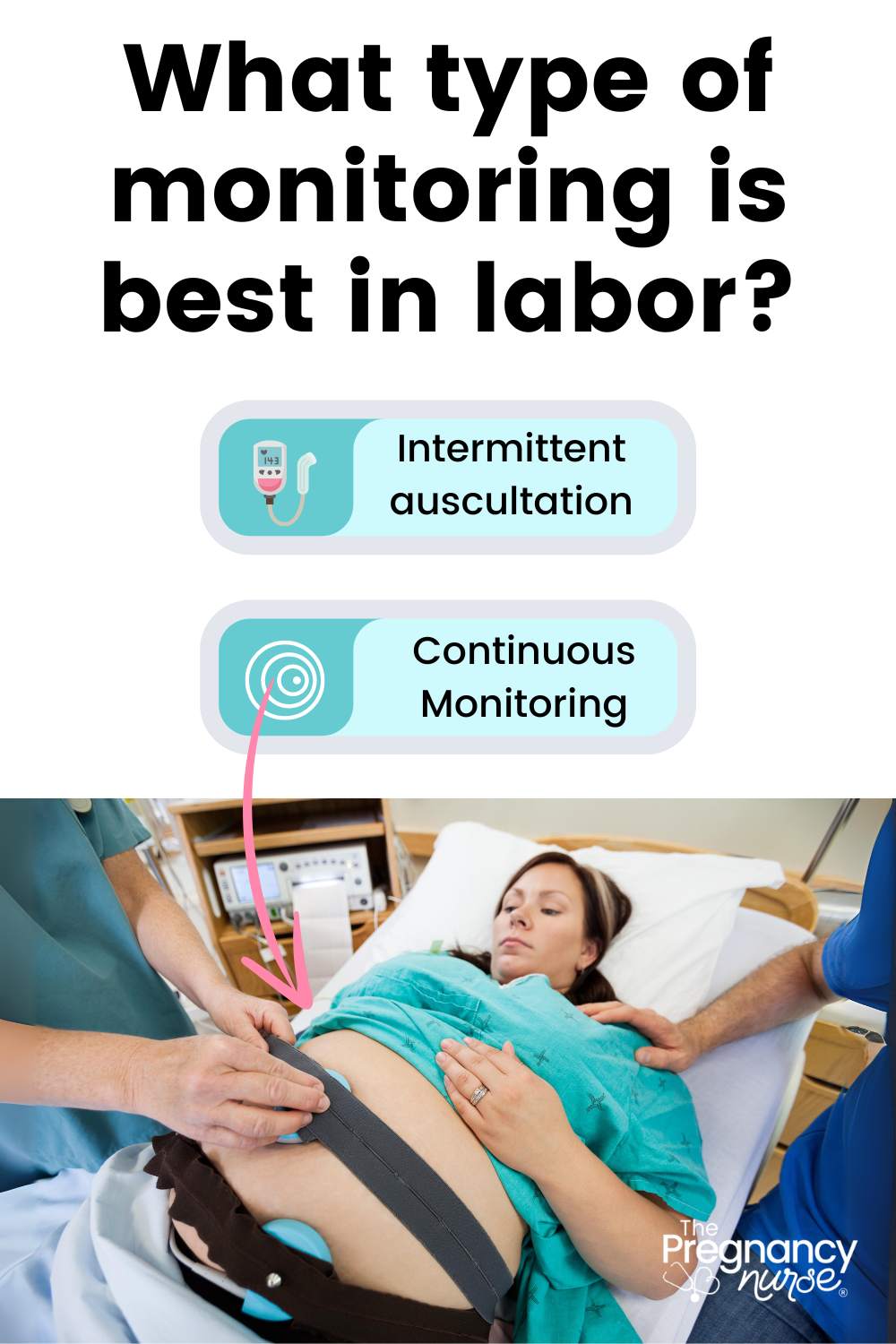
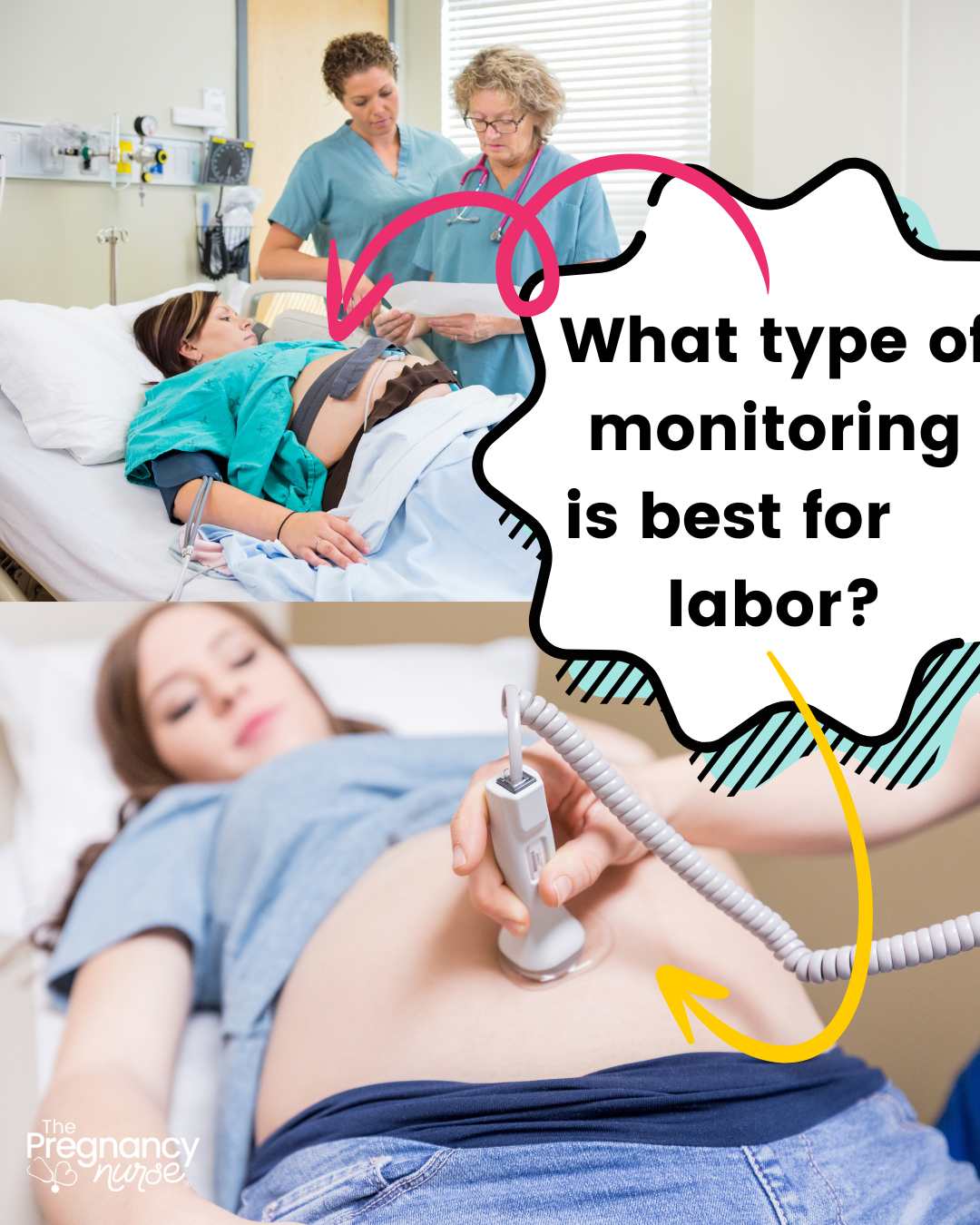



 5 Fixes for Groin Pain During Pregnancy
5 Fixes for Groin Pain During Pregnancy
